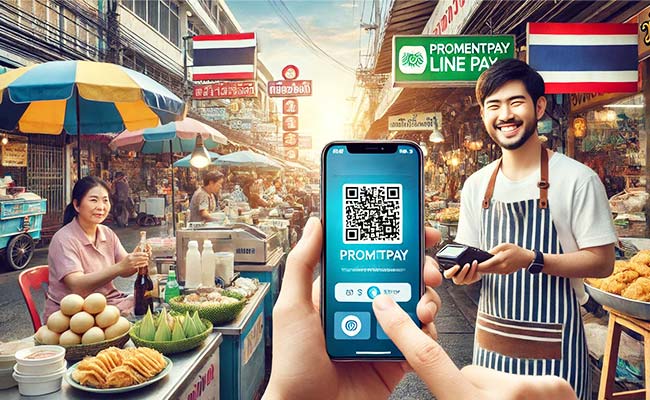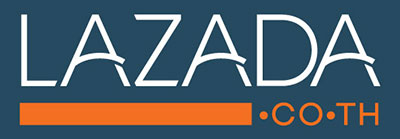Thailand has fully embraced cashless payments, with QR codes and digital wallets now widely accepted across the country. Whether you're in a street market, a taxi, or a shopping mall, you’ll often see businesses displaying QR codes for payment.
For expats, learning how to use PromptPay, LINE Pay, and other digital payment systems can make everyday transactions faster, cheaper, and more convenient. This guide will cover everything you need to know to set up, use, and take full advantage of cashless payments in Thailand.

QR Code Payments in Thailand – How Do They Work?
Thailand’s QR payment system is part of the PromptPay network, regulated by the Bank of Thailand. It allows payments to be made instantly by scanning a QR code from your banking app or digital wallet.
To use PromptPay you will need:
- A Thai bank account (Bangkok Bank, Kasikorn, and SCB are good expat-friendly options.)
- A mobile number
- A passport number (for some banks and expats)
- A Thai national ID (for Thai national)
Register in branch, link your Thai phone number to your account and you are ready to go! Now you can send and receive money instantly using your phone number.
How to Pay with a QR Code in Thailand:
- Look for a QR code at checkout. You’ll see these at restaurants, shops, taxis, and even street vendors.
- Open your Thai banking app (such as Bangkok Bank, Kasikorn, SCB, etc.).
- Select “Scan QR Code” and point your phone at the QR code.
- Enter the amount (if required) and confirm the payment.
- Show the merchant your confirmation screen—the transaction is instant!
Tip: Some merchants have static QR codes, meaning you need to manually enter the payment amount. Others have dynamic QR codes, where the total amount is already set when you scan. Always double-check before confirming!
Benefits of PromptPay
- No transaction fees or very low fees for transfers.
- Accepted almost everywhere – most Thai businesses prefer PromptPay over credit cards.
- Easier bill payments: utilities, rent, and even government services support PromptPay.
- Works seamlessly with QR code payments.
Tip: Once registered, people can send you money just by entering your phone number—no need to share a bank account number!
How to Use LINE Pay in Thailand
LINE Pay is a digital wallet integrated into the popular LINE messaging app. It allows users to pay for goods and services, transfer money, and store credit card details for easy checkout.
How to Set Up LINE Pay
- Open the LINE app and go to “Wallet.”
- Tap “LINE Pay” and follow the setup instructions.
- Link a Thai bank account or credit card.
- Verify your identity (requires a Thai phone number and bank account).
Many stores accept LINE Pay, as well as PromptPay, and you can transfer money to friends on LINE instantly.
Tip: LINE Pay can be useful for promotions—sometimes there are discounts or cashback offers that aren’t available with other payment methods.
Other Digital Payment Options in Thailand
While PromptPay and LINE Pay are the most widely used, other payment apps are also available:
- TrueMoney Wallet: Popular for mobile top-ups, online shopping, and 7-Eleven payments.
- Rabbit LINE Pay: Used for BTS Skytrain rides and some food delivery apps.
- ShopeePay & Lazada Wallet: Used for online shopping on Shopee and Lazada.
Which Payment Method Should Expats Use?
| Payment Method | Best For | How to Use |
|---|---|---|
| PromptPay | Everyday transactions, street vendors, taxis | Linked to a Thai bank account, scan QR codes to pay |
| LINE Pay | Online shopping, promotions, sending money to friends | Linked to a bank or credit card, works in the LINE app |
| TrueMoney Wallet | Mobile top-ups, small transactions, 7-Eleven | Standalone wallet app, separate from banks |
| Rabbit LINE Pay | BTS Skytrain, some stores and food delivery | Integrated with LINE Pay, needs a linked card |
Best Setup for Expats:
- Register for PromptPay with your Thai bank—it’s the most useful for daily life.
- Set up LINE Pay if you frequently use the LINE app (great for money transfer between friends, and many small business transactions)
- Use TrueMoney or Rabbit LINE Pay: if you rely on the BTS for transport or mobile top-ups.
Final Thoughts
Thailand has rapidly transitioned toward a cashless economy, with digital payments becoming the norm even among small street vendors. The adoption of QR code payments, driven by PromptPay and mobile banking apps, has surged in recent years, making cashless transactions more convenient and widely accepted.
Once dominated by cash-based transactions, even local markets and street food stalls now prominently display QR codes for easy payments. This shift has been fueled by government initiatives, fintech innovation, and changing consumer behavior, with both locals and expats embracing the speed, security, and simplicity of digital payments over traditional cash exchanges.
The good news is, Thailand’s digital payment ecosystem is incredibly efficient and easy to use once you’re set up – even for us old heads who grew up with a “cash is King” approach to life.
PromptPay is the gold standard for expats, offering fast, free payments almost everywhere, while LINE Pay and other digital wallets provide added convenience.
If you haven’t made the switch to cashless payments yet, now is a great time. Depending on your current method of payment you could save on ATM fees, avoid carrying cash everywhere, and make transactions a little smoother.
——
Have questions about using digital payments in Thailand? Drop them in the comments!
Tips for a Better Life in Thailand
Get Good Health Insurance:
Start with a quick quote here from Cigna. Then you can compare it to other companies.
Send Money to Thailand:
If you are sending money to your loved one, or your own Thai bank account, try Wise here. It is fast and cheap. Me and the majority of my readers are using it.
Improve Your Thai Skills:
Learning Thai makes life easier, and way more fun. I use Thaipod101. Get a free account by clicking here. It is really easy to use.
Last Updated on



Leave a Reply